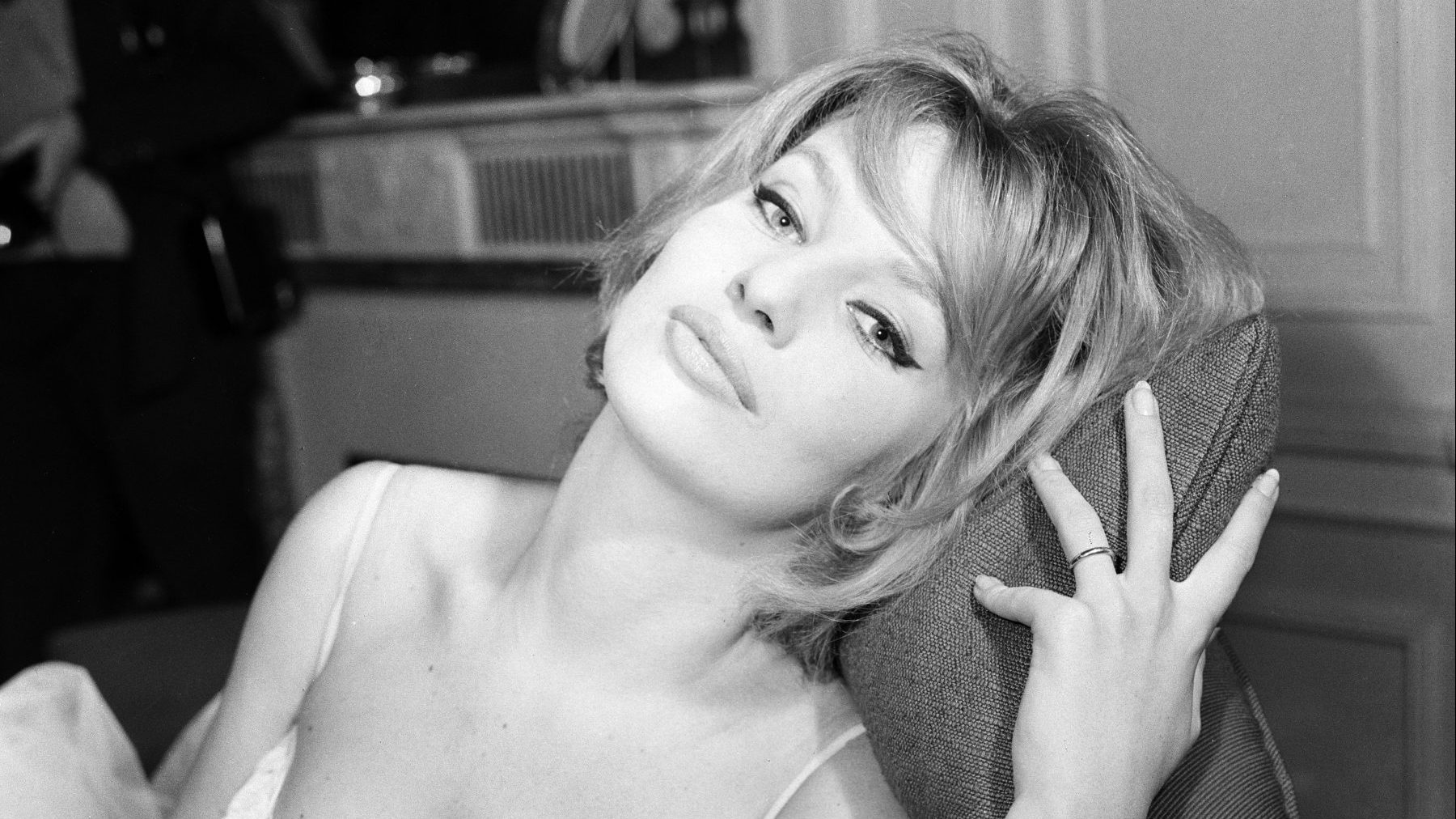The flowers in the suite gave off a perfume that suddenly, if briefly, transported her home. No matter how often it happened it took her by
surprise every time. She shook her head and switched on her brightest smile.
It was the spring of 1958 and Annette Stroyberg was attending the Cannes
Film Festival with her fiancé, the director Roger Vadim. The 22-year-old
Dane had met Vadim two years earlier while working as a fashion model in
Paris at a time when he was emerging from the end of his marriage to Brigitte Bardot. Stroyberg had only been in the French capital a few weeks and knew only a few words of the language, but was bowled over immediately by Vadim’s creativity and energy, his ability to “think a thousand things at once” as she put it.
When the couple arrived in Cannes that May they already had a baby daughter, Nathalie – born on the day Vadim and Bardot’s divorce was
finalised – and would marry a few weeks later. In love with her husband
and taking to life as a new mother, not to mention enjoying the lifestyle that
came with being at the cutting edge of French popular culture, Stroyberg was as happy and settled as she’d ever been.
Vadim’s 1956 film And God Created Woman had bombed on release in
France but made a superstar of Bardot when picked up in the US and
enhanced Vadim’s reputation as a director, particularly of actors who also
happened to be beautiful women. When he learned that he and Annette
were staying in the same hotel as the influential Italian film producer Carlo
Ponti, husband of Sophia Loren, Vadim arranged a meeting hoping to discuss future projects.
When the Vadims walked into Ponti’s suite, Stroyberg was immediately aware the producer could barely take his eyes off her. Not in an inappropriate way, she sensed, she was well attuned to that kind of attention, more that he was viewing her through an imaginary viewfinder.
Ponti pitched Vadim a project he was considering, a cinematic adaptation of Les Liaisons dangereuses based on the 1792 novel by Pierre Choderlos de Laclos but set in contemporary France. Given Vadim’s growing reputation for
thrumming screen eroticism, Ponti wanted him to direct. In addition, he had someone in mind for the key role of Marianne Tourvel, a woman “as pure as crystal” blackmailed into an affair by the male lead.
Vadim raised his eyebrows and Ponti nodded at Stroyberg. “Her,” he said. “I want her for this role.” Stroyberg’s smile flickered. “There was a long silence, at the end of which, struggling for words, I explained to Ponti that I absolutely was not an actress and had no intention of becoming one,” she recalled.
A summer of bemused reluctance followed until, at a dinner with Ponti and Loren at their home in Rome, Stroyberg finally agreed to make her acting debut in one of the highest-profile French films of the decade.
Not surprisingly, sharing the screen with established greats Gérard Philipe and Jeanne Moreau only emphasised Stroyberg’s inexperience. Critics and
the public expecting the next Brigitte Bardot were disappointed, but Stroyberg’s was a different, warmer kind of presence, less demanding of
attention, more vulnerable.
Despite the lukewarm reaction to her performance, Stroyberg’s fledgling career was boosted by the film falling foul of French censors, thanks in the
main to a nude scene involving Stroyberg herself. It took advocacy from a lawyer called François Mitterrand and a private viewing of the film by Charles de Gaulle himself to clear the film for distribution, lending it – and Stroyberg – a notoriety guaranteed to fill seats.
Having turned down Jean-Luc Godard’s advances to play Patricia in À bout de souffle, the role that eventually went to Jean Seberg, Stroyberg’s next film was another of her husband’s projects. Blood and Roses, adapted from a novel by Sheridan Le Fanu, allowed her a little more range as the vampire Carmilla, most famously in an erotically charged scene with Elsa Martinelli, in a film much better suited to her ethereal screen presence.
By the time Blood and Roses was released in 1961 she had split from Vadim. He had moved on to a teenage Catherine Deneuve; Stroyberg retaliated by embarking on a relationship with Sacha Distel.
Divorced from Vadim but destined ever to be associated with him, Stroyberg moved to Rome, where she found “a rare thing for a woman of the time – a new independence. I no longer owed anything to anyone; my life and career were mine and mine alone”.
In Italy there were a handful of largely forgettable films, including 1962’s Anima nera, an early Roberto Rossellini project on which she met and
fell in love with her leading man Vittorio Gassman, before her characteristic restlessness took over again. After three years in Rome, spent mostly with Gassman but also including relationships with Alain Delon, Omar Sharif and Warren Beatty, Stroyberg turned her back on the film business, moved back to Paris, met and married a Moroccan sugar baron, had a son and enrolled at the Sorbonne.
Still chronically unable to settle, in 1970 she divorced her husband and four years later married a Greek shipping magnate named Gregory Callimanopulos, relocating with him to America.
Just when it seemed like she’d finally put down roots, at the turn of the 1990s
she left Callimanopulos and returned to Europe, dividing her time between
Paris and Copenhagen, marrying for a fourth time and becoming part of an exalted Danish social circle that revolved around Queen Margrethe.
Stroyberg’s restless, peripatetic life had come full circle. She’d grown up in
Copenhagen after spending her early years on the island of Fyn, where her
father was a doctor. It was the flowers around Rynkeby, the village close to the northern coast of the island where she was born, that had assailed her senses in Ponti’s suite, the heady fragrance of the only true happiness she’d ever known.
Stroyberg was five years old when her parents divorced and her mother moved the family to the Danish capital. Her father remained on the island and killed himself five years later.
She spent the rest of her life looking for the idyll of her earliest memories; the bright summer flowers, the vast blue skies, the sea spray on her skin as
she looked out at the tantalising promise of the horizon.
There were ambitions to go to medical school but her head-turning beauty was noticed by a photographer who set her on the road to Paris and a future destined to be spent looking for something indefinable, something left behind among the flowers of Rynkeby, something that would, finally, call her home.
“She had a reputation as a vamp but in truth Annette was as fragile as a gazelle, a woman with a disarming air of melancholia,” wrote Gassman in his
autobiography. “She was someone incapable of putting down roots, seeking ceaselessly to allay her indefinable anxiety.”




